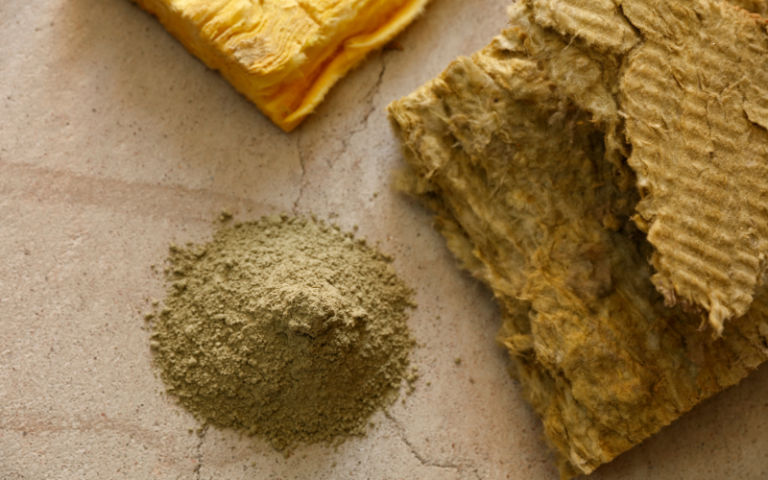Piles of construction and demolition waste In Europe is directed to landfill, as processes for large-scale reuse of building materials are still being developed.
The goal of the Government Decree that entered into force in 2012 was to achieve a 70% recycling rate for construction waste by 2020. The conditions for achieving this goal are better than ever before.
Upcycling surplus-mineral wool slab is eco-friendly
We have been upcycling clean mineral wool from construction sites and production side flows for years and years. Surplus materials and cuttings are collected from constructions sites and then transported to EcoUp’s production plant. The surplus bit and pieces of mineral wool go into the production process at our factory, and as the outcome we get CE marked mineral wool ready to installed to a new site.
Upcycling new surplus materials into a new product significantly reduces the amount of construction waste. But what to do with the old and dirty mineral wool from demolition sites?
Reusing demolition wool is a game changer
Until now, it has been very difficult to recycle used mineral wool. Insulation wool has not been accepted in waste-to-energy plants since it is a material that does not burn easily and tends to leave a mess behind. Used mineral wool has invariably been taken to landfill, where it has stayed forever due to its non-biodegradable nature.
EcoUp Oy’s innovation makes it possible to reuse insulation wool from demolition sites. Our production plant processes old mineral wool to make new, sustainable recycled materials, geopolymers. These recycled materials made from demolition wool can used to replace virgin raw materials in the production of concrete, tarmac and bricks, for example.
The benefit for the environment is undeniable: resource efficiency is improved through the reuse of demolition materials, and emissions from using concrete in construction are reduced. Companies that collect insulation wool for reuse also save money through reduced landfill fees.
EcoUp has started producing recycled material from mineral wool collected from demolition sites. If you want to make more sustainable concrete, for example – and why wouldn’t you!


